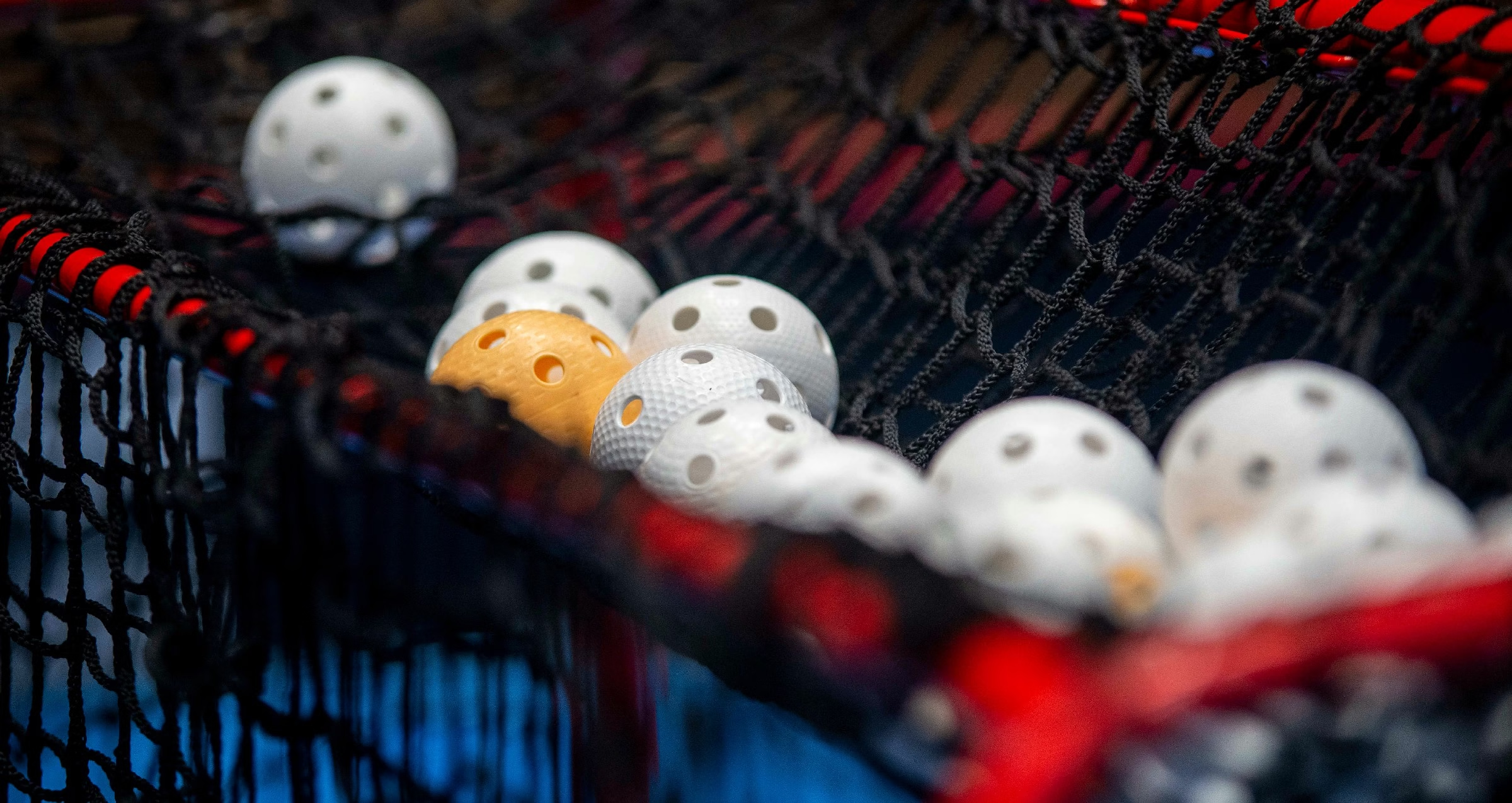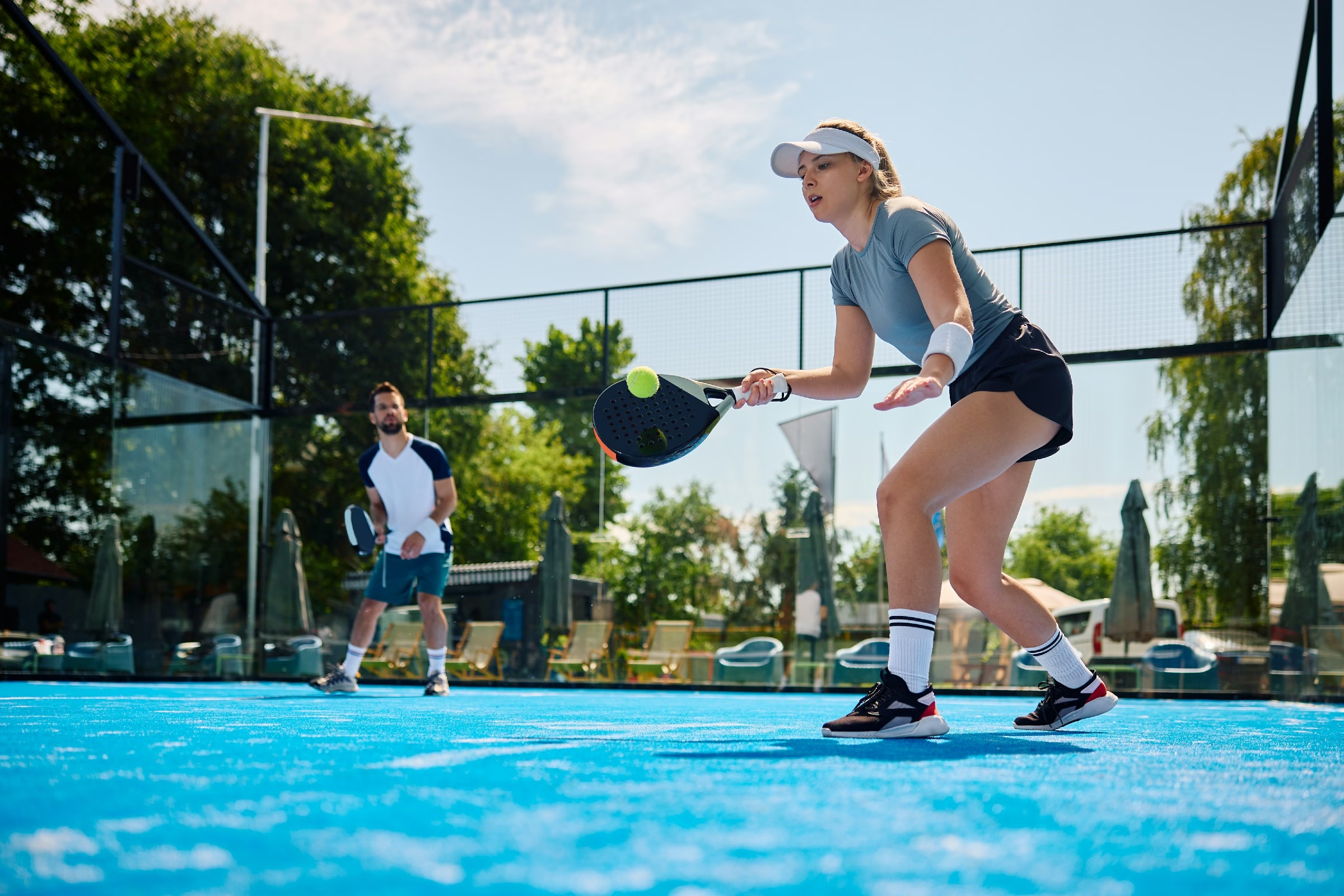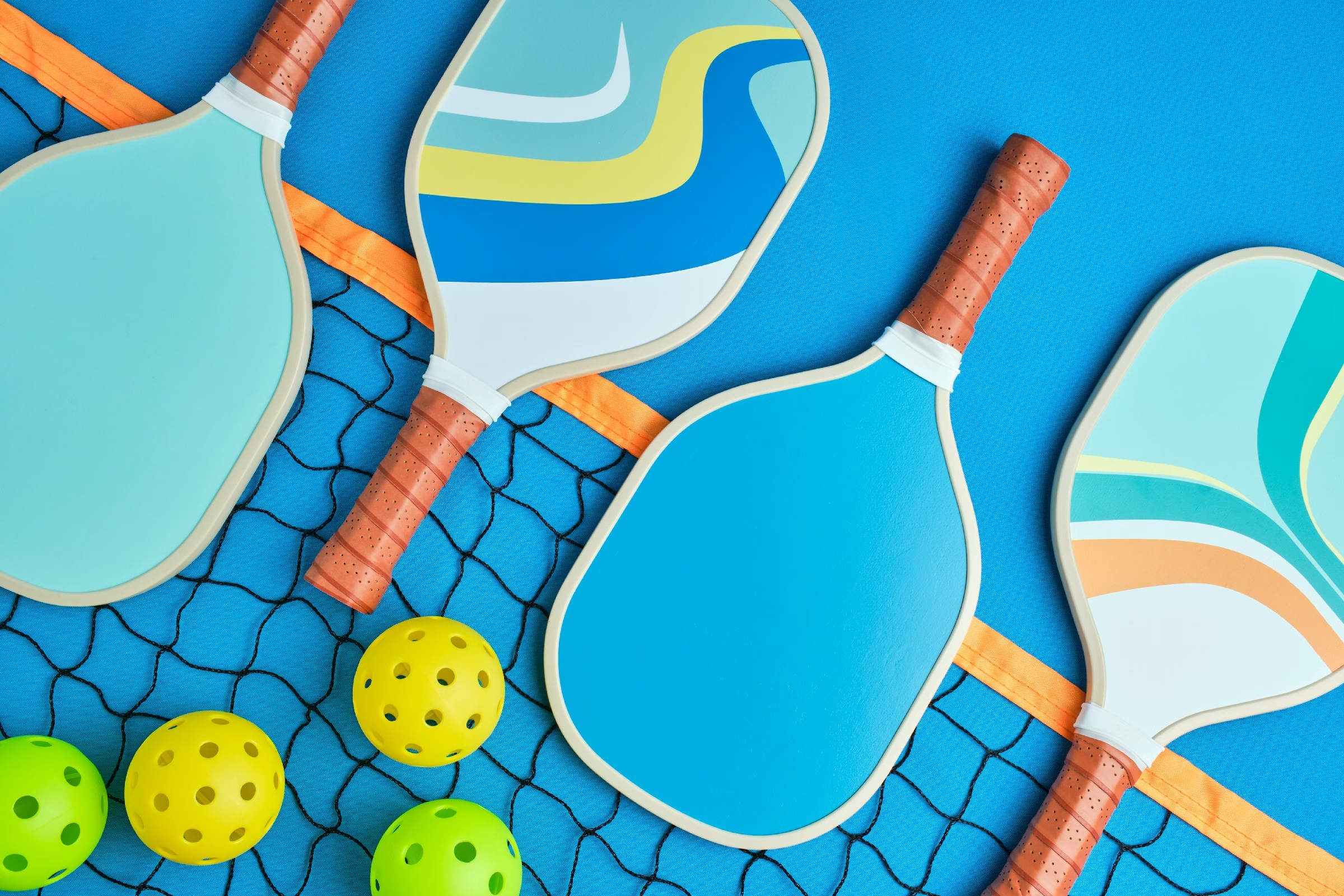Blog
how to become a pickleball distributor

Unlocking Opportunities: A Guide to Becoming a Pickleball Distributor
In recent years, pickleball has surged from relative obscurity to one of the fastest-growing sports in the United States and beyond. As enthusiasts flock to courts and communities embrace the game, the demand for quality equipment has skyrocketed. this burgeoning market presents an exciting chance for entrepreneurs looking to dive into the world of sports distribution. But how do you become a pickleball distributor? Whether you’re a seasoned business professional or a passionate newcomer, this guide will navigate the essential steps to kickstart your journey. From understanding the market dynamics to building supplier relationships, we’ll reveal the strategies and insights you need to successfully serve the vibrant pickleball community. Join us as we explore the fundamentals of establishing yourself in this captivating field—and perhaps discover a new avenue for growth and fulfillment along the way.
Table of Contents
- Understanding the Pickleball Market Landscape
- Building Your Brand in the Pickleball Community
- Sourcing Quality Equipment for Distribution Success
- Navigating Legal and Financial Considerations
- establishing Effective Sales Channels and Partnerships
- Promoting Your Pickleball Distribution Business Strategically
- Q&A
- in Summary
Understanding the Pickleball Market Landscape
the pickleball market is experiencing a critically important surge in popularity, driven by a growing interest in the sport among diverse demographics. This boom has opened up numerous opportunities for aspiring distributors looking to enter the field.Understanding the market involves analyzing key trends, consumer behavior, and competition dynamics. The sport’s appeal lies in its accessibility—easy to learn, suitable for individuals of all ages, and can be played both indoors and outdoors. As a distributor, tapping into these unique selling points can differentiate your offerings in a crowded marketplace.
Within this vibrant landscape,it is essential to identify your target audience. Pickleball players can be segmented into various groups: recreational players,competitive athletes,and even seniors seeking active lifestyles. By recognizing the distinct requirements and preferences of each segment, you can tailor your inventory to meet their specific demands.Consider the following factors when evaluating your potential customer base:
- Age Groups: Focus on young adults, middle-aged players, and seniors.
- Skill Levels: Offer equipment catering to beginners versus advanced players.
- Locations: Identify hot spots for pickleball courts, such as community centers and recreational parks.
Moreover, the competitive landscape is evolving, with both established brands and emerging newcomers vying for consumer attention. Evaluating competitors can unveil valuable insights into their product lines, pricing strategies, and marketing tactics.Creating a simple comparison table for possible manufacturers can clarify your options:
| Brand Name | Product Range | Average Price |
|---|---|---|
| ABC Sports | paddles, Balls, Accessories | $50 – $150 |
| XYZ Gear | Complete Sets, Clothing | $75 – $200 |
| Fun Paddles | Paddles only | $30 – $100 |
Building Your Brand in the Pickleball Community
In a growing community like pickleball, creating a memorable brand identity is essential for your distribution venture. Start by defining what makes your brand unique. Consider the core values you want to communicate—be it quality, community spirit, or innovation. effective branding encompasses visual elements such as your logo, color scheme, and packaging, and also storytelling that resonates with players and enthusiasts.
Engage directly with the pickleball community through events and social media platforms. Participate in local tournaments, sponsor teams, or organize community-friendly events to establish your presence. Leverage social media to connect with your audience, sharing tips, highlights of triumphant games, and exclusive promotions. Content ideas include:
- Player Spotlights: Feature interviews or profiles of local pickleball players.
- tutorial Videos: Create engaging content showcasing techniques, strategies, and equipment.
- Community Challenges: Organize fun,competitive events that encourage audience participation.
To build a robust network,collaborate with other brands and influencers in the pickleball niche. Identifying reputable partners can enhance your credibility and expand your reach.Consider crafting a partnership table that outlines potential collaborations:
| Brand/Influencer | Collaboration Ideas |
|---|---|
| Local Sports Stores | Exclusive product bundles at events |
| Popular Pickleball Players | Product endorsement and tutorials |
| Online Communities | Sponsored giveaways and contests |
Sourcing Quality Equipment for Distribution success
Ensuring your venture into pickleball distribution thrives begins with securing high-quality equipment that resonates with your target market. To draw in pickleball enthusiasts, prioritize sourcing products that are not only durable but also innovative. This means evaluating manufacturers not just by their cost, but also by their reputation in the industry. Look for companies that specialize in racket design or ball manufacturing, as they often embed cutting-edge technology into their products.
When evaluating potential suppliers, consider creating a checklist to guide your decision-making process. This could include:
- Product Quality: Ensure the equipment meets industry standards.
- Supplier Reliability: Research their delivery timelines and customer service ratings.
- Customization Options: Determine if they offer branding or specialized equipment.
- Pricing Structures: Analyze their pricing and the profit margins you can achieve.
as you narrow down your options, it’s essential to negotiate favorable terms with your suppliers.Setting up a partnership that allows flexibility in orders and payment schedules can greatly enhance your operations. For example, consider a tiered pricing model based on order volume, which can benefit both you and your supplier in the long run. here’s a simple table outlining potential pricing strategies:
| Order Volume | unit Price | Discount (%) |
|---|---|---|
| 1-50 | $20.00 | 0% |
| 51-100 | $18.00 | 10% |
| 101+ | $15.00 | 25% |
This structured approach not only maximizes profitability but also fosters a collaborative relationship with your suppliers, paving the way for sustained distribution success. Remember, the right equipment sourced from reliable suppliers can set you on a path toward becoming a prominent player in the pickleball community.
Navigating Legal and Financial Considerations
As you embark on the journey of becoming a pickleball distributor, understanding the legal landscape is crucial. Ensure you are familiar with local,state,and federal regulations governing sporting goods distribution. Key legal considerations include:
- Business Structure: Decide whether you will operate as a sole proprietorship, partnership, LLC, or corporation, as each has varying legal implications.
- Licenses and Permits: Research the necessary licenses and permits required to operate in your area, which may include sales tax permits and business licenses.
- Contracts: When negotiating with manufacturers, ensure that all agreements are legally binding and clearly outline terms such as pricing, delivery schedules, and return policies.
Financial considerations are equally important to ensure sustainability in your distribution venture. Begin by developing a detailed business plan that includes financial projections, startup costs, and revenue expectations. Consider these financial aspects:
- Startup Costs: Calculate the initial investment required for inventory, marketing, and operational expenses.
- Funding Options: Explore various funding avenues like small business loans, grants, or angel investors to support your endeavor.
- Profit Margin Analysis: Assess your profit margins to ensure that pricing strategies align with market demand and competitive pricing.
Lastly, staying informed and adaptable in your legal and financial strategies will position you for success. Keeping track of industry changes and market trends will contribute to your long-term profitability.It’s also wise to consult with:
- Legal Advisors: To navigate contracts and compliance efficiently.
- Financial Advisors: To ensure sound financial management and investment strategies.
Incorporate this guidance into your operational framework for a solid foundation in the growing pickleball industry.
Establishing Effective Sales Channels and Partnerships
To effectively establish sales channels for your pickleball distribution business,it’s crucial to identify and collaborate with various stakeholders. Understanding your target market is essential; cater your strategies to appeal directly to pickleball enthusiasts, local sports shops, and community centers. Consider creating partnerships with:
- local Sports Retailers: They frequently enough have loyal customer bases and can benefit from adding pickleball products to their inventory.
- Pickleball Clubs and Associations: Collaborating with these organizations can help you tap into dedicated player communities and keep you informed about trending demands.
- Online Marketplaces: Platforms like Amazon and eBay can expand your reach considerably beyond the local market.
Along with forging alliances, leveraging the power of social media to form partnerships with influencers in the pickleball world can yield substantial benefits. Identify bloggers, youtubers, and social media personalities who share your passion. Inviting them to review your products or promote your brand can boost visibility and create authentic connections with potential customers. some effective platforms to consider include:
- Instagram: Use visually appealing posts or Stories to engage with the pickleball community.
- Facebook: Join dedicated groups to share valuable content and form relationships.
- Twitter: Engage in conversations and share updates using relevant hashtags.
Creating a comprehensive sales strategy may involve analyzing competitors and designing a unique selling proposition (USP).Delve into market research to understand how other distributors operate, their pricing structures, and unique product offerings. This understanding will help you identify gaps in the market and establish a compelling USP. A simple table could illustrate key insights:
| Competitor | Unique Selling Proposition | Price Range |
|---|---|---|
| Competitor A | High-quality paddles | $50 – $120 |
| Competitor B | starter kits for beginners | $30 – $60 |
| Competitor C | Luxury equipment for professionals | $150+ |
Promoting Your Pickleball Distribution Business Strategically
To effectively promote your pickleball distribution business, begin by defining your target audience and understanding their unique needs. This insight will help tailor your marketing efforts. Utilize various channels to reach these potential customers:
- Social Media Platforms: Leverage Instagram, Facebook, and TikTok to showcase dynamic content such as product demos, customer testimonials, and engaging challenges.
- Email Marketing: Build a mailing list to keep interested parties updated on new products, promotions, and events.
- Online Communities: Engage with pickleball forums or groups where enthusiasts gather, offering valuable insights and fostering relationships.
Next, consider collaborating with local pickleball clubs and organizations to heighten brand visibility. Establish mutually beneficial partnerships that could include:
- Sponsorship: Sponsor local tournaments or events, providing products as prizes to encourage participation.
- Co-Hosting Events: Organize clinics or workshops with clubs to demonstrate your equipment and build community connections.
- Referral programs: Develop a program rewarding clubs or players who refer customers to your business.
don’t underestimate the power of providing extraordinary customer service alongside a robust online presence. Implement a feedback system where customers can share their experiences and suggest improvements. Create a visually appealing website optimized for search engines, offering clear product descriptions, competitive pricing, and easy navigation. consider a comparison table to highlight the unique features of your products:
| product | Weight | Material | Price |
|---|---|---|---|
| Pro Series Paddle | 7.8 oz | Composite | $169.99 |
| Eco-Friendly Ball | 0.7 oz | Natural Rubber | $11.99 |
| Premium Shoes | 12.5 oz | Synthetic Mesh | $89.99 |
Q&A
Q&A: How to Become a Pickleball Distributor
Q1: What exactly does a pickleball distributor do?
A1: A pickleball distributor plays a crucial role in the sports ecosystem, acting as the bridge between manufacturers and retailers. They source pickleball equipment, such as paddles, balls, nets, and other accessories, and then distribute these items to sporting goods stores, online retailers, or direct to consumers. Essentially, they ensure that the right products reach the right places at the right time.
Q2: Why should someone consider becoming a pickleball distributor?
A2: With pickleball’s skyrocketing popularity, becoming a distributor can be a lucrative opportunity.The sport appeals to a wide range of demographics, making it a vibrant market. By entering this field, you not only tap into a growing industry but also promote a sport that fosters community and active lifestyles. Plus, the thrill of being part of a dynamic, ever-evolving market can be incredibly rewarding.
Q3: What are the first steps to start this journey?
A3: first, it’s essential to conduct thorough market research to understand demand trends and popular brands in the pickleball space. Next, consider developing a business plan outlining your target market, product range, and sales strategies. begin networking with manufacturers and established brands to explore distribution opportunities.
Q4: Do I need specific qualifications or experience?
A4: While specialized qualifications aren’t mandatory,experience in sales,marketing,or supply chain management can be beneficial. understanding the sports equipment market and having a passion for pickleball will help you connect with customers and navigate the industry dynamics more effectively.
Q5: How do I go about sourcing products?
A5: Start by reaching out to manufacturers and brands of pickleball equipment. Attend trade shows, sporting goods expos, and pickleball tournaments to network and see the latest products firsthand. Building solid relationships with suppliers will help you get better pricing and ensure reliable stock.
Q6: What are the typical costs involved in becoming a distributor?
A6: Initial costs can vary widely based on factors like inventory,storage,marketing,and operational expenses. You’ll need to budget for initial stock purchases,shipping,warehousing (if needed),and possibly a website or marketing campaigns. It’s wise to conduct a comprehensive cost analysis to ensure you’re well-prepared.
Q7: How can I effectively market my pickleball distribution business?
A7: Utilize a combination of online and offline marketing strategies.Develop an engaging website, leverage social media to connect with pickleball enthusiasts, and consider creating content (like tutorials and reviews) that highlights the products you offer. Building partnerships with local sports clubs or sponsoring tournaments can also boost visibility.
Q8: Are there legal considerations I need to keep in mind?
A8: Absolutely. Register your business according to local regulations, and ensure you obtain any necessary licenses or permits. It’s also essential to understand your liability as a distributor, so consulting with a legal expert familiar with sports equipment distribution may be wise.
Q9: How do I handle inventory and logistics?
A9: Efficient inventory management is key to success. Invest in inventory management software that can track stock levels, sales, and orders. When it comes to logistics, establish relationships with reliable shipping partners to ensure timely delivery of products. An organized system will help minimize costs and maximize customer satisfaction.
Q10: What are some challenges I might face as a pickleball distributor?
A10: Like any business venture, you may encounter challenges, such as fluctuating demand, competition from other distributors, or issues with suppliers. Staying adaptable and maintaining strong interaction with your partners and customers will be vital to overcoming these hurdles. Engaging with the pickleball community can also provide insights and support.
By following the steps outlined in this Q&A,you can embark on an exciting journey to become a pickleball distributor,contributing to the growth of a sport that brings joy and togetherness to enthusiasts everywhere!
In Summary
As we wrap up our exploration of the vibrant world of pickleball distribution,it’s clear that this dynamic sport offers not just a thrilling pastime but also an exciting business opportunity. Whether you’re a seasoned entrepreneur or a newcomer eager to dive into the ever-expanding pickleball community, understanding the intricacies of becoming a distributor is essential. From selecting the right products to establishing valuable connections within the industry, each step you take paves the way for your success.
Remember, in the world of pickleball, it’s not just about the paddles and balls; it’s about fostering a community of enthusiasts who share your passion. As the sport continues to grow, so to does the demand for quality equipment and reliable distribution channels.By committing yourself to this journey, you will not only be building a profitable venture but also contributing to the joyful spirit of pickleball that brings people together.
So, gear up, get ready, and take your first step towards becoming a pickleball distributor. The court is yours—may your journey be rewarding and your business thrive!












